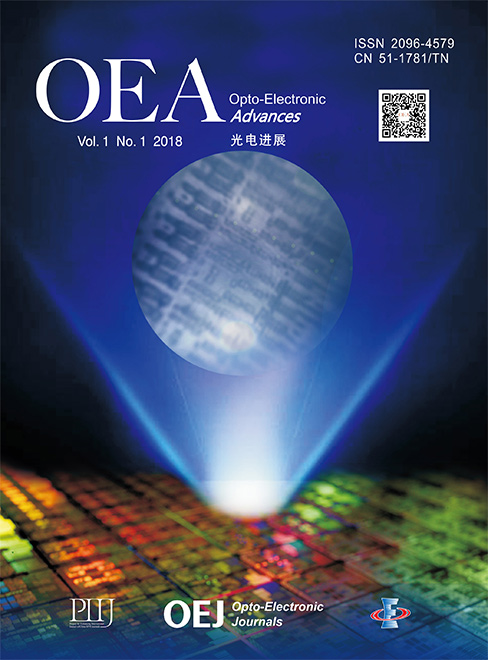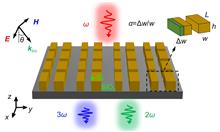 View fulltext
View fulltext
Benefiting from the abrupt phase changes within subwavelength thicknesses, metasurfaces have been widely applied for lightweight and compact optical systems. Simultaneous broadband and high-efficiency characteristics are highly attractive for the practical implementation of metasurfaces. However, current metasurface devices mostly adopt discrete micro/nano structures, which rarely realize both merits simultaneously. In this paper, dielectric metasurfaces composed of quasi-continuous nanostrips are proposed to overcome this limitation. Via quasi-continuous nanostrips metasurface, a normal focusing metalens and a superoscillatory lens overcoming the diffraction limit are designed and experimentally demonstrated. The quasi-continuous metadevices can operate in a broadband wavelength ranging from 450 nm to 1000 nm and keep a high power efficiency. The average efficiency of the fabricated metalens reaches 54.24%, showing a significant improvement compared to the previously reported metalenses with the same thickness. The proposed methodology can be easily extended to design other metadevices with the advantages of broadband and high-efficiency in practical optical systems.
Catenary optics enables metasurfaces with higher efficiency and wider bandwidth, and is highly anticipated in the imaging system, super-resolution lithography, and broadband absorbers. However, the periodic boundary approximation without considering aperiodic electromagnetic crosstalk poses challenges for catenary optical devices to reach their performance limits. Here, perfect control of both local geometric and propagation phases is realized through field-driven optimization, in which the field distribution is calculated under real boundary conditions. Different from other optimization methods requiring a mass of iterations, the proposed design method requires less than ten iterations to get the efficiency close to the optimal value. Based on the library of shape-optimized catenary structures, centimeter-scale devices can be designed in ten seconds, with the performance improved by ~15%. Furthermore, this method has the ability to extend catenary-like continuous structures to arbitrary polarization, including both linear and elliptical polarizations, which is difficult to achieve with traditional design methods. It provides a way for the development of catenary optics and serves as a potent tool for constructing high-performance optical devices.
Nonlinear dielectric metasurfaces provide a promising approach to control and manipulate frequency conversion optical processes at the nanoscale, thus facilitating both advances in fundamental research and the development of new practical applications in photonics, lasing, and sensing. Here, we employ symmetry-broken metasurfaces made of centrosymmetric amorphous silicon for resonantly enhanced second- and third-order nonlinear optical response. Exploiting the rich physics of optical quasi-bound states in the continuum and guided mode resonances, we comprehensively study through rigorous numerical calculations the relative contribution of surface and bulk effects to second-harmonic generation (SHG) and the bulk contribution to third-harmonic generation (THG) from the meta-atoms. Next, we experimentally achieve optical resonances with high quality factors, which greatly boosts light-matter interaction, resulting in about 550 times SHG enhancement and nearly 5000-fold increase of THG. A good agreement between theoretical predictions and experimental measurements is observed. To gain deeper insights into the physics of the investigated nonlinear optical processes, we further numerically study the relation between nonlinear emission and the structural asymmetry of the metasurface and reveal that the generated harmonic signals arising from linear sharp resonances are highly dependent on the asymmetry of the meta-atoms. Our work suggests a fruitful strategy to enhance the harmonic generation and effectively control different orders of harmonics in all-dielectric metasurfaces, enabling the development of efficient active photonic nanodevices.












